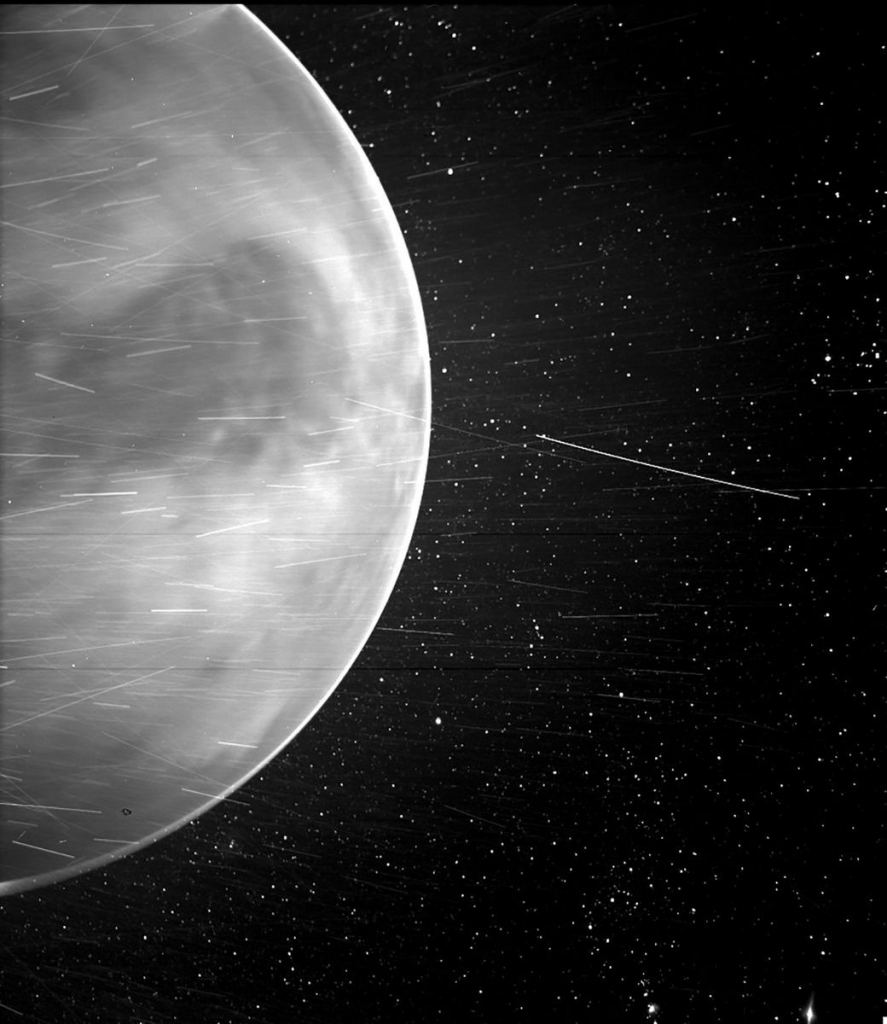What we’ve Learned About Venus From the Parker Solar Probe
By Andy Tomaswick
The Parker Solar Probe has been getting in a lot of extracurricular activity lately. Originally designed to observe the Sun, the probe has been taking full advantage of its path through the solar system. In addition to snapping pictures of comets, the probe has repeatedly focused on Venus, including capturing an image peering underneath the cloud cover of the notoriously hot world. Now a team led by Glyn Collinson of Goddard Space Flight Center found another serendipitous discovery in the data Parker collected during its latest flyby in the summer of 2020 – the probe actually flew through Venus’ upper atmosphere, and that atmosphere appeared different than it was almost 30 years ago.
Parker has been using Venus in a gravity assist maneuver, but not in the traditional way of sending a object hurling faster out into the outer reaches of the solar system. It is trying to slow down so that it can spend a longer time close to the Sun, the primary target of its observations. While it was on its latest close approach to Venus, the mission team, located at the Applied Physics Laboratory at John Hopkins, decided it would collect some data. Some of that data resulted in the picture beneath the clouds, but some used a different instrument.
Credit: APL YouTube Channel
FIELDS is an instrument that can measure electric and magnetic fields. It was designed for use in the Sun’s atmosphere, but it also picked up a strange signal during a 7 minute stretch of the approach to Venus. In the data, the signal looked like a frown at very low frequencies. In another moment of scientific serendipity, Dr. Collinson remembered where he had seen a signal that looked like that before.
The same signal could be seen in data from Galileo as it passed through the ionosphere of Jupiter’s moons. Ionospheres consist of charged plasmas that emit radio waves. But they are weak enough that Parker had to fly through Venus’ ionosphere in order to detect it.
Credit: NASA Goddard YouTube Channel
This was serendipity indeed because there hasn’t been a direct measurement of Venus’ ionosphere since the Pioneer Venus Orbiter in 1992. That was near a “solar maximum”, which is the sun’s most active period during its solar cycle. Since then, ground based observations from Earth have suggested that Venus’ ionosphere had thinned out significantly as part of the solar cycle. But without direct measurements, it was impossible to tell if that was actually happening.
Those direct measurements are exactly what Parker just provided, and they confirmed the idea that the ionosphere is indeed thinning out, with the reading taken in 2020 being near a solar minimum. So while the thinner ionosphere reading is still preliminary and unexplained, confirming it from two different sources is a step towards truly beginning to understand.
Soon Parker will turn its focus back to the main object of its work. But for now we can be grateful for the extra science on our sister planet that came out of the mission so far. Maybe there will be a chance for more such serendipitous findings later in the mission, or on other ones.
Learn More:
NASA – NASA’s Parker Solar Probe Discovers Natural Radio Emission in Venus’ Atmosphere
Geophysical Research Letters – Depleted Plasma Densities in the Ionosphere of Venus Near Solar Minimum From Parker Solar Probe Observations of Upper Hybrid Resonance Emission
UT – Parker Solar Probe Captured Images of Venus on its way to the Sun
UT – Here’s the First Image of the Sun from the Parker Solar Probe
Lead Image:
Image Parker took peering under the clouds of Venus.
Credit: NASA/Johns Hopkins APL/Naval Research Laboratory/Guillermo Stenborg and Brendan Gallagher
The post What we’ve Learned About Venus From the Parker Solar Probe appeared first on Universe Today.

May 7, 2021 at 05:37PM
via Universe Today read more...

Post a Comment